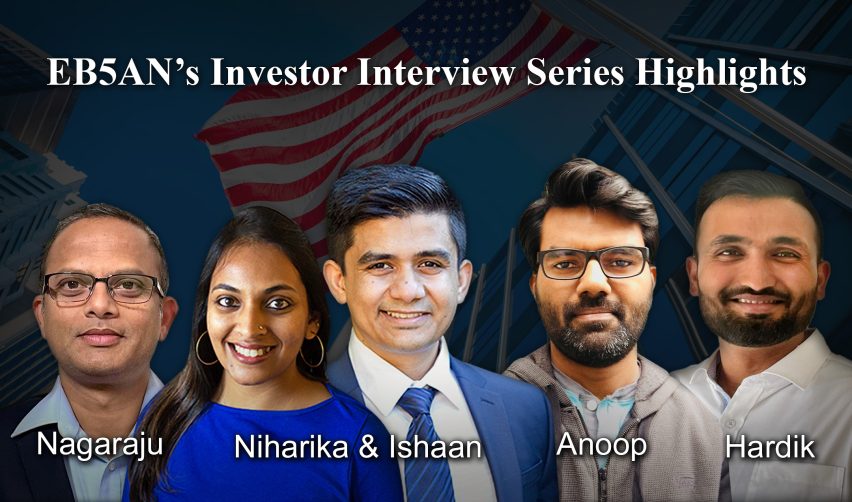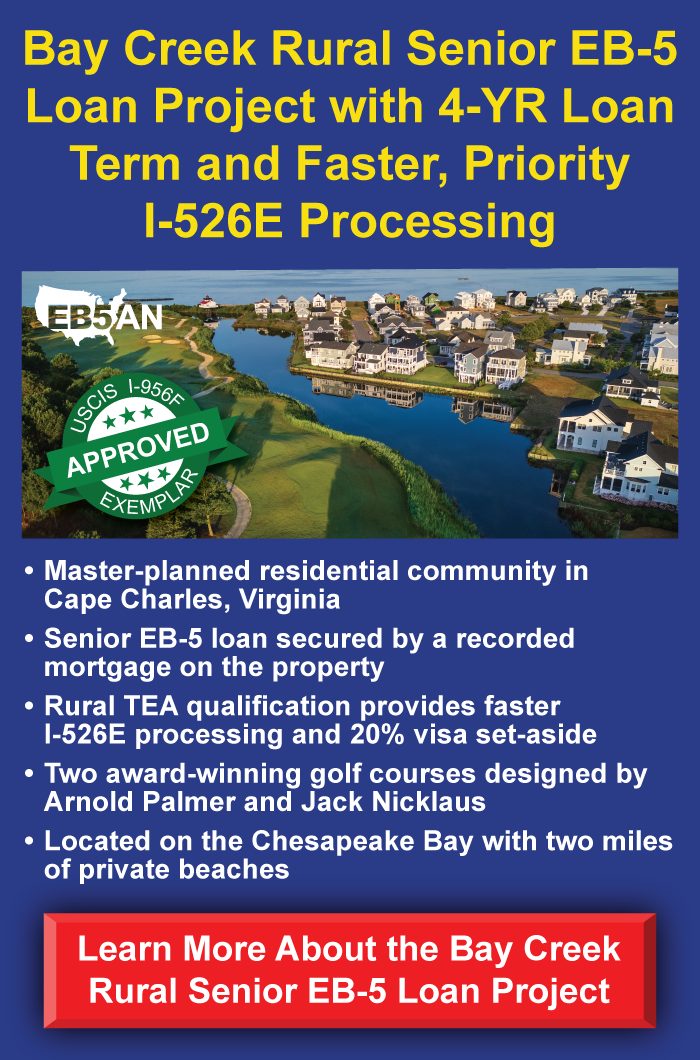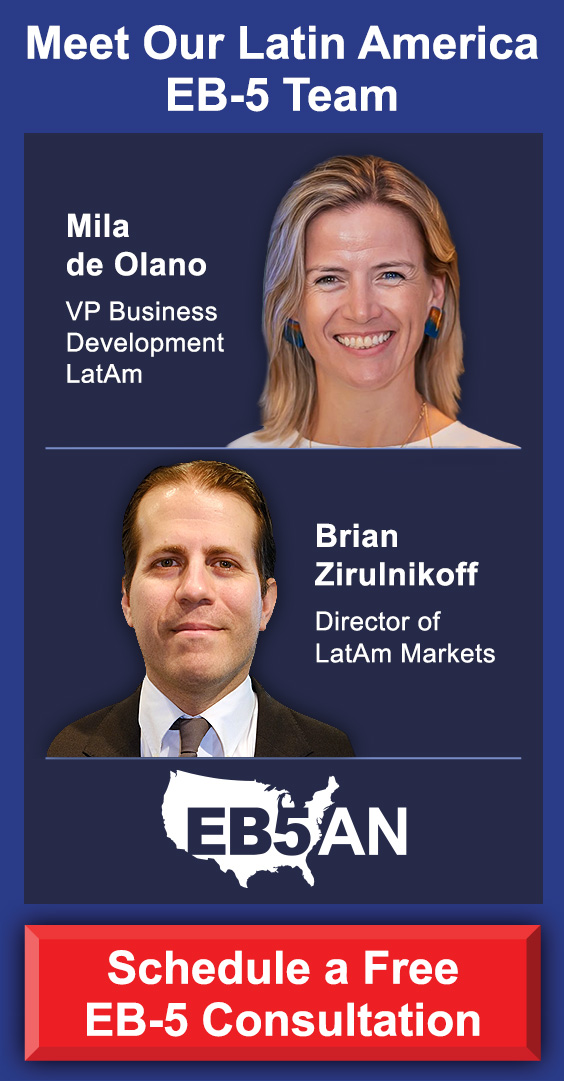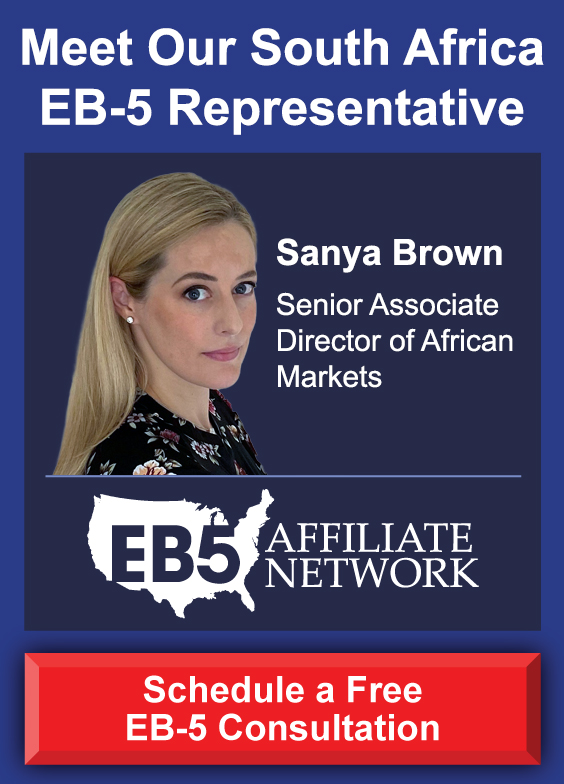While interest in U.S. immigration continues to grow globally, one country in particular is seeing a significant number of skilled professionals moving to the United States: India. With EB-5 demand only growing, Indian nationals (along with their Chinese counterparts) continue to dominate global EB-5 petition filings.
What accounts for this remarkable trend?
“[India’s] tech workforce,” reports The Economist, “is vast: the country has more open-source developers than China, second only to America … Its diaspora leads some of the world’s biggest tech firms, including Google, Microsoft and IBM.”
Indeed, India has rapidly become a global power in STEM, especially within the IT workforce. Indian technology professionals have comprised a large segment of U.S. IT sector.
Indian tech professionals often arrive in the United States not as permanent residents (Green Card holders) but on temporary work visas, especially the H-1B. Despite the second Trump administration’s more restrictive policies on some forms of immigration, the H-1B program has continued to thrive and receive bipartisan support.
In the 2023 fiscal year alone, Indian applicants accounted for over 72% of H-1B visas.
But the H-1B visa is a temporary visa and is highly restrictive in terms of work and travel opportunities. And if an H-1B worker is laid off, such as in the recent mass layoffs from tech firms, they may have only 60 days to find another H-1B job—or leave the United States with their family.
Understandably, many Indian professionals on H-1B and similar visas are instead searching for a path to permanent residency—the freedom to live, work, and travel internationally with few restrictions.
Comparatively, the EB-5 visa offers numerous benefits, including work and travel flexibility. Perhaps most importantly, the EB-5 visa can result in a U.S. Green Card in a few short months: EB5AN’s investors in rural projects have received their Green Card in as little as 9 months.
In contrast, other immigration programs, such as the EB-2 and EB-3 visas, can have extreme wait times of up to 134 years for Indian applicants.
At EB5AN, we are pleased to regularly work with Indian EB-5 applicants, helping them invest in low-risk EB-5 projects that will help them achieve both immigration and financial success.
“Indian EB-5 applicants bring a valuable contribution to the United States,” notes Sam Silverman, managing partner of EB5AN. “It’s our privilege to have helped many Indian investors and their families to get started on the path to permanent residency.”
Our groundbreaking interview series with EB-5 investors features 26 episodes with Indian nationals. Of all our interviews, India is the most represented nationality.
Why, you may wonder, do so many Indian EB-5 investors entrust EB5AN with their funds and their immigration goals? We invite you to find out by reading highlights from four of our interviews with Indian investors in EB5AN projects.
You’ll notice how these investors consistently cite EB5AN’s transparency, commitment to each investor, and best-in-class project quality. Like them, you could also receive I-526E approval—and even a Green Card—in a matter of months, not years.
Transitioning From H-1B to EB-5: Interview With Nagaraju (Rocky River Rural EB-5 Project)
How H-1B Workers Can Navigate the EB-5 Process: Interview With Niharika and Ishaan (Rocky River Rural EB-5 Project)
How To Avoid Extreme Wait Times for EB-2: Interview With Anoop (Rocky River Rural EB-5 Project)
How Hardik Got a Quick I-526E Approval and Work and Travel Permits (Twin Lakes Rural EB-5 Project)
EB-5: The Best Way for Indian Nationals to Become U.S. Permanent Residents
Transitioning From H-1B to EB-5: Interview With Nagaraju (Rocky River Rural EB-5 Project)
Nagaraju’s immigration journey began in 2016, when he arrived in the United States from India on an H-1B visa, full of ambition and a clear goal: to build a long-term future for his family.
Initially placed in the EB-2 category, he soon found himself stalled by the long wait times facing many Indian professionals. With growing frustration over the backlog, Nagaraju began to explore other paths—and it was during the COVID-19 pandemic that he discovered the EB-5 Immigrant Investor Program.
Unlike the uncertain and lengthy EB-2 route, EB-5 offered Nagaraju a more direct path to permanent residency. After months of careful research, he concluded that the EB-5 program met both his immigration and financial goals.
He began the process by finding the right immigration attorney—someone who not only knew EB-5 inside and out but also understood the unique challenges faced by Indian H-1B holders. He chose Anahita George, an Indian-born U.S. citizen, whose clear and culturally attuned advice proved invaluable during the critical early stages of gathering and verifying source-of-funds documentation.
While assembling the necessary paperwork, Nagaraju also investigated various regional centers. He wanted a reputable and responsive organization that could provide detailed project documentation and a proven track record.
He found this in EB5AN.
The professionalism of their team, along with their collaboration with The Kolter Group, gave him confidence in their approach.
Among the many EB-5 projects available, one in particular stood out—Rocky River, a rural development modeled after the successful Twin Lakes project.
The Rocky River project offered something unique: a phased construction plan for retirement-focused single-family homes located in a rural targeted employment area. For Nagaraju, this translated into multiple advantages: priority processing under EB-5 rules, visible project milestones, and a lower-risk structure that aligned with his desire for transparency and control. The clear similarities between Twin Lakes and Rocky River, including the phased timeline (meaning houses are built, and therefore sold, in phases as opposed to all at once), helped assure him that this was a sound investment.
Once Nagaraju made his decision, the EB5AN team sprang into action. The process of completing the necessary paperwork and transferring funds was handled swiftly and professionally. He never had to chase down updates or documents—the team worked in sync with his attorney to keep everything on track. This responsiveness helped ease the stress of such a significant life decision.
Today, Nagaraju is confident that he made the right choice.
His advice to other Indian H-1B holders us simple: Do your homework. Be methodical. Choose an attorney who understands your background. Look for a regional center that shares information openly. And above all, choose a project with a structure—like Rocky River—that gives you clarity, control, and confidence.
How H-1B Workers Can Navigate the EB-5 Process: Interview With Niharika and Ishaan (Rocky River Rural EB-5 Project)
Niharika and Ishaan’s journey to EB-5 visas began as many do: with high hopes, long wait times, and the desire for a more stable future in the United States.
Originally from India, they moved to the U.S. in 2015 on F-1 student visas to pursue their master’s degrees at the University of Illinois Urbana-Champaign. Over the years, they transitioned to H-1B status and lived in cities across the country—including Chicago, Nashville, and San Jose—steadily building their careers. But after nearly a decade in the U.S., they realized that the wait for permanent residency through the EB-2 or EB-3 categories was simply too long and uncertain.
The anxiety of visa backlogs and constant status tracking became unsustainable. For Niharika and Ishaan, the EB-5 program emerged as the only immigration pathway that offered both a fast and secure route to Green Cards. They were particularly drawn to the autonomy EB-5 provided: the freedom to live and work anywhere in the U.S. without employer dependency or annual visa lotteries.
When evaluating potential EB-5 projects, Niharika and Ishaan applied a systematic, criteria-driven approach. Their must-haves included a rural designation, strong job creation cushion, and Form I-956F approval to mitigate the risk of denial. While they briefly considered urban projects like EB5AN’s ONE Tampa, they ultimately chose the Rocky River rural project, citing its favorable immigration timeline, lower risk, and solid return potential.
Transparency and trust were critical in selecting their regional center. The couple found EB5AN’s straightforward, data-rich presentations far superior to those they encountered elsewhere. Unlike others who glossed over risks or delayed sharing key documents, EB5AN provided comprehensive materials upfront—repayment schedules, detailed project metrics, and historical performance.
Their educational approach also stood out: During multiple calls, the EB5AN team took time to walk Niharika and Ishaan through terms like “capital stack,” “job creation buffer,” and “set-aside visas.”
The project’s developer, Kolter, further solidified their decision. Kolter’s multi-decade track record, survival through economic downturns, and deep experience in real estate reassured them that their capital would be handled responsibly. They cross-referenced Kolter’s projections with independent demographic and market data from North Carolina, and finding that these numbers aligned further boosting their confidence.
Once committed, the investment process moved swiftly. With support from Ahmed Khan at EB5AN, they transferred their $800,000 investment within a week and completed all documentation quickly. The entire process—from legal consultation to petition submission—took just over two months.
For others considering the EB-5 path, Niharika and Ishaan stress the importance of early planning, speaking with experienced investors, and maintaining an organized approach.
In their words, EB5AN was more than just a service provider—it was a partner. The team’s transparency, consistent communication, and investor-first attitude made a complex process feel clear and manageable.
Today, Niharika and Ishaan feel empowered, optimistic, and well on their way to U.S. permanent residency—on their own terms.
How To Avoid Extreme Wait Times for EB-2: Interview With Anoop (Rocky River Rural EB-5 Project)
Anoop, originally from Bangalore, India, had long envisioned settling permanently in the United States.
He moved to San Jose in 2015 on an L-1B visa through an intra-company transfer, bringing his wife and young son on dependent visas. At the time, he expected a relatively short wait—four to five years—for a Green Card through the EB-2 category. The backlog for Indian applicants only deepened, however, delaying his path to permanent residency indefinitely.
After eventually securing an H-1B visa and I-140 approval, Anoop remained stuck in the priority queue. The unpredictability of the Visa Bulletin—and his desire to secure his family’s future—prompted him to explore alternatives.
He briefly considered EB-1A, but the documentation requirements and timeline were prohibitive.
Then, late in 2024, he turned his attention to the EB-5 program.
Anoop spent weeks researching the EB-5 process, USCIS rules, and various regional centers. He focused on finding both the right legal support and the right project.
Wanting an attorney with deep, specialized experience in EB-5, he chose Anahita George, whose expertise and responsiveness stood out during his initial consultations. She guided him through the complexities of source-of-funds documentation—mainly proceeds from U.S.-based restricted stock units—and ensured every transaction was clearly documented. Despite minor challenges with birth and marriage certificates from India, the process went smoothly under her supervision.
In parallel, Anoop evaluated multiple regional centers. Many lacked transparency or had minimal project information available. In contrast, EB5AN stood out due to its detailed construction updates, quarterly reports, and robust history of project execution. He further appreciated EB5AN’s honesty and responsiveness in answering questions about land acquisitions, job creation forecasts, and project timelines. Their transparency and professionalism solidified his choice.
Among EB5AN’s offerings, Anoop selected the Rocky River rural project, becoming one of the project’s first investors. Unlike more mature projects like Twin Lakes, Rocky River was in its early stages, and the land deal hadn’t yet closed. For Anoop, this meant his investment would be deployed immediately upon closing, allowing job creation to begin sooner—an essential criterion for timely EB-5 approval.
He also prioritized the project’s heightened visa availability: With rural projects allocated 20% of the EB-5 visa pool, he saw this as the safest route to avoid backlogs for Indian applicants.
The Rocky River project’s focus—single-family homes for retirees—also appealed to Anoop, who had prior experience in real estate. He was impressed by Kolter’s strong track record, including several successful EB-5 deals. Compared to resort or hospitality projects, he felt a housing development had a clearer, more reliable path to completion and repayment.
Once committed, Anoop worked closely with EB5AN’s Jordan Lawrence to finalize the subscription paperwork and wire his funds to escrow. The entire process, from project selection to document signing, took just over a week. Anoop was particularly impressed by the efficiency and structure of EB5AN’s investor onboarding process.
Looking back, Anoop believes EB-5 was the most practical path to secure Green Cards for his family. The process isn’t fast, he admits, but it offers certainty—a quality he found lacking in the EB-2 route. He advises future investors to plan for a multi-year process and surround themselves with experienced professionals.
Anoop credits his success to two key decisions: hiring a dedicated EB-5 immigration attorney and choosing a transparent, experienced regional center. With both in place, he now feels confident his investment will yield not just permanent residency but a successful financial outcome as well.
How Hardik Got a Quick I-526E Approval and Work and Travel Permits (Twin Lakes Rural EB-5 Project)
Born in India and raised in Canada, Hardik spent over two decades working in Canada’s utility sector as an electrical engineer. Although he had a secure position, he felt limited by the career growth opportunities in Canada.
The U.S. market promised more diversity and advancement—but repeated visa hurdles made it difficult to find long-term employment. Each job application led to the same question: “Are you eligible to work in the U.S.?” While he technically qualified for temporary permits like the TN visa, Hardik was looking for a more stable path—one that wouldn’t depend on employer sponsorship or the unpredictability of visa renewals.
That search led him to EB-5. Its promise of permanent residency for himself and his family, along with the ability to live and work in the U.S. without restrictions, made it a compelling choice.
After months of research and discussions with multiple regional centers, Hardik decided to invest with EB5AN. He was especially drawn to EB5AN’s Twin Lakes Georgia rural project—a residential development designed as a 55-plus community near Atlanta.
Hardik’s decision wasn’t made lightly. He personally visited four or five EB-5 regional centers and evaluated several types of projects, favoring residential real estate because of his familiarity with the housing market from previous investments in Canada.
His site visits to Twin Lakes in the spring and summer of 2023 confirmed that the project aligned perfectly with his expectations. He toured the community, walked through model homes, and was impressed by the quality of construction and the amenities offered—swimming pools, gyms, and pickleball courts, all tailored to the active senior lifestyle. Seeing an engaged community and ongoing home sales made him confident not only in the project’s viability but also in its job-creating power—critical for meeting EB-5 program requirements.
Hardik officially made his investment in mid-2023, and the benefits came swiftly. Just four months later, he and his wife received employment authorization documents and advance paroles—allowing them to work freely and travel internationally without immigration complications. This gave his wife, who had paused her career during their move, the opportunity to reenter the workforce. It also gave their family flexibility they had never enjoyed before.
Then came the biggest milestone: Hardik’s I-526E petition was approved in just 12 months, a time frame made possible by the project’s rural designation and the current lack of backlog for Indian investors. He received the approval notification while on a trip to Mexico—and immediately shared the news with his immigration attorney. That moment confirmed his belief that he had made the right decision.
Behind Hardik’s smooth process was careful planning. He credits much of his success to choosing the right attorney—Anahita George—who guided him through source-of-funds documentation and explained key strategic considerations like backlog timing, rural benefits, and project evaluation. Hardik also spent months speaking with regional centers, learning the nuances of different project types and locations to ensure the best fit.
His advice to new EB-5 investors is simple and direct: “Don’t wait.” Especially for Indian nationals, 2025 represents a unique window of opportunity, with no backlog and several high-quality projects still open. Waiting for more testimonials or for other investors to get their capital back may mean missing out on the advantages currently available.
Today, Hardik and his family are enjoying the freedom their EB-5 visas have granted them. With a permanent Green Card on the horizon and a potential return on his investment in the future, he views EB-5 as a decision that changed his life.
For those ready to take the next step, he says, “EB5AN and the Twin Lakes project are an excellent place to start.”
EB-5: The Best Way for Indian Nationals to Become U.S. Permanent Residents
Indian professionals are rapidly discovering that the EB-5 visa offers a far more stable and flexible path to U.S. permanent residency than the uncertainty of temporary visas like the H-1B or L-1 visas.
In each of the stories highlighted here—from Nagaraju to Niharika and Ishaan to Anoop and Hardik—one constant has emerged: EB5AN’s role as a trusted partner throughout the EB-5 process. These investors consistently cite EB5AN’s transparency, responsiveness, and high-quality project offerings as reasons for their confidence.
These attributes have helped many others achieve success through EB5AN as well: Over the past 10+ years, we have helped over 2,700 families relocate to the United States. And between 2023 and 2024 alone, EB5AN investors accounted for 20% of all rural approvals.
With India facing historically long wait times for EB-2 and EB-3 visas, the EB-5 route—especially through rural projects—presents a rare and timely opportunity.
As these interviews show, the right investment and the right regional center can turn long-standing immigration frustrations into a fast, secure path toward the American dream.
For help on beginning the EB-5 process, schedule a free consultation with EB5AN.







